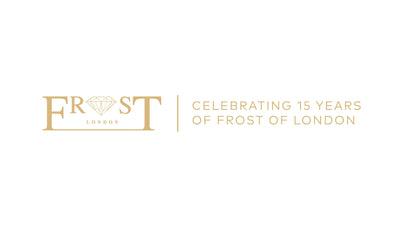How to Clean and Care for Yellow Gold Jewellery
Most gold enthusiasts already know that there are different types of gold, with yellow gold as the variation we most commonly think of as “pure” gold.
In addition to yellow gold, rose gold and white gold are also popular for use in jewellery. As a seller of specialist luxury jewellery, we carry collections with rare varieties of gold such as black gold and even green gold.
Still, yellow gold is likely to account for the bulk of your luxury jewellery collection.
This means it’s important to know how to clean and maintain yellow gold, as well as how often you should send gold items to be professionally cleaned.
What Is Yellow Gold?
Before we get into the proper cleaning regime of yellow gold, we need to first define what constitutes as yellow gold. And what classifies as “pure gold” within this bracket. Both “pure gold” and lower karat gold have different characteristics, which means they are cleaned differently.
The classic appearance of yellow gold makes most of us assume this type of gold is automatically pure.
While it is purer than other forms of gold such as white gold, it tends to be mixed with fewer other materials. For example, white gold is always mixed with some form of white metal like palladium and is then coated with rhodium to give it a striking silver appearance.
Some yellow gold – namely, 24 Karat gold – is classified as pure. While other yellow gold items below this threshold are not. Items below this karat specification will consist of both gold and other types of metals.
If you’re a luxury jewellery fanatic, you’re likely to have special pieces in your collection that reach the 24 Karat gold standard. Even so, some gold jewellery staples are made from lower specifications of gold to give them greater durability.
That doesn’t mean these items carry less luxury value, it just makes these forms of gold fit for purpose. Something as prestigious as Cartier’s yellow gold LOVE bracelet is made from 18 Karat gold (around 75% pure gold) as it’s designed to be worn for extended periods. Similarly, this Shay Fine anklet is also made from 18 Karat gold to preserve its expected lifetime.
The higher the karat value of a piece of gold the purer it becomes, yet the more vulnerable this material is to wear and tear. Pure 24K gold is softer in form.
As a result, many items such as wedding and engagement bands are purposely made from much lower quantities of gold. These tend to range from 14–18 Karats.
Needless to say, you’ll need to know how to clean both types of gold, however large your collection.
Removing (and Preventing) Tarnish on Yellow Gold
Pure – 24 Karat – gold is not prone to tarnishing in the same way lower Karat value gold is. Gold’s luxury status is partly due to the fact that it’s the one of the least reactive of the elements, meaning oxygen will never cause it to tarnish. Your concern with pure yellow gold should be more focused on lifestyle factors to prevent scratches on its soft surface.
Other forms of gold below 24 Karats will tarnish over time due to the blend of gold with other more reactive materials.
The rate of which your jewellery will tarnish depends on the individual. Something as simple as our body chemistry can cause metals to deteriorate faster, as well as contact with cosmetic substances, cleaning products and specific foods.
Removing tarnish is fairly simple, requiring only a few drops of jewellery cleaner to be mixed with warm water to form a cleaning solution.
Once this liquid has been formed, you’ll need to gently place your gold items into the water to sit for fifteen minutes.
This process will remove the tarnish gradually, leaving you with damage-free jewellery.
Also read: How to Clean Gold Rings, Jewellery and Trinkets at Home
Making Yellow Gold Appear Shiny Again
In its virgin form, yellow gold is a shiny precious metal that has even been likened to the light of the sun.
Over time, yellow gold can begin to appear dull often due to residue, excessive washing and contact with oils.
To revive its lustre gold, it can be buffed and polished after cleaning.
For this, you’ll need to use a non-abrasive cloth or cleaning brush, especially if you’re working with high Karat gold. The soft surface of gold can mean even something as gentle as polishing could result in small surface scratches.
Polish wipes are an excellent way to ensure that you won’t run the risk of scratching your gold but you can also use a specialist gold cloth or towel.
You’ll want to work the product into the surface using circular motions rather than rigid up and down movements. This will promote shine and leave the surface streak-free.
If your yellow gold is showing signs of wear like scuff marks or scratches, you may need to seek professional assistance. In some cases, jewellery in a fair or poor condition may be given a deep polish by a jeweller where the exterior layer is removed to improve the appearance of the item.
Best Practices for Yellow Gold Jewellery Care
Although cleaning yellow gold is fairly simple, taking steps to maintain yellow gold in the interim will greatly improve the lifecycle of your collection.
Some simple practices that increase the longevity of your gold are to always remove when washing your hands, to store away from direct sunlight in separate compartments to other jewellery and to pay attention to the particular Karat value when buying jewellery to decide if its fit for purpose.
Shop our range of yellow gold jewellery starting from 14 Karat gold with free worldwide delivery on all orders.



Leave a comment